©2025 ZenABM - All Rights Reserved.
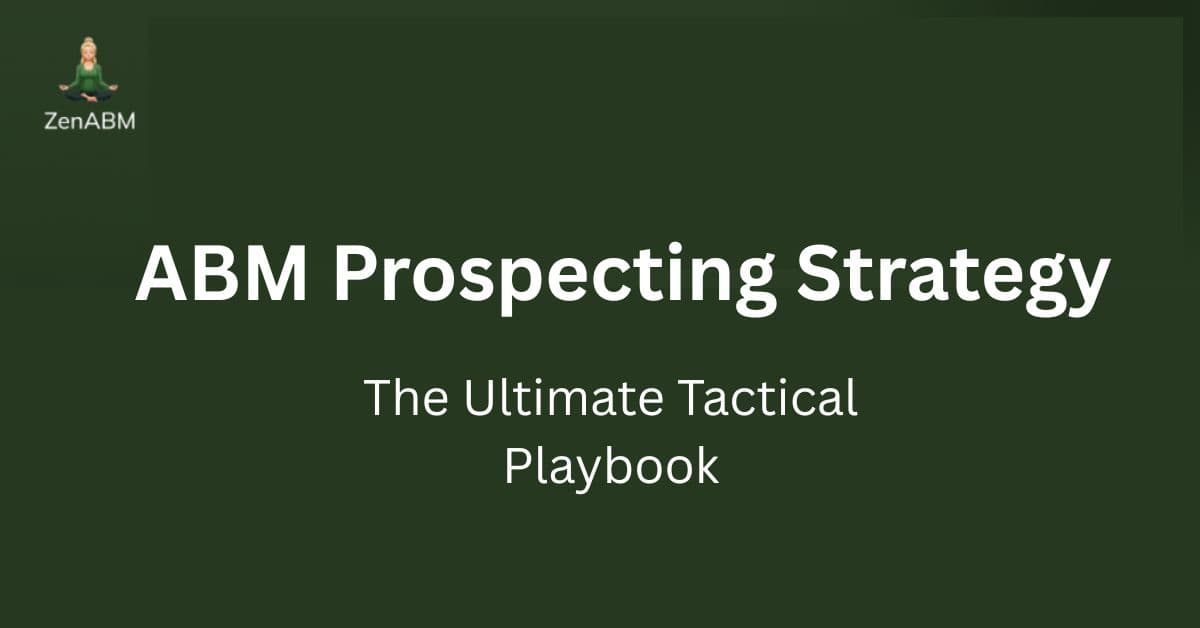
You don’t have time for fluff, and neither do I.
So, instead of copying and pasting generic theoretical content, I have researched insights from LinkedIn thought leaders, Reddit practitioners, Quora answers, elite newsletters, and real benchmark reports to bring you this guide on ABM prospecting strategy guide.
I’ll also discuss how ZenABM can help you along the way.
Let’s go!
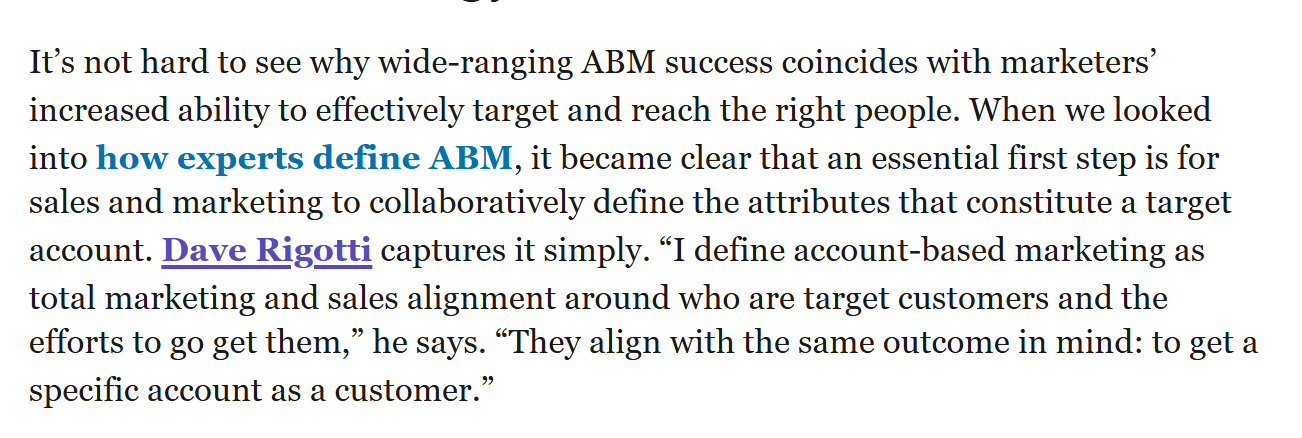
Sales and marketing alignment is a must for ABM prospecting strategy.
In fact, your sales team agreeing and contributing to your TAL – that’s imperative to the essence of ABM.
So decide your budget, KPIs, goals and target accounts together.
Supportive Statistic: When Sales and Marketing operate as a single strike force, efficiency surges. Companies see 67% higher deal close rates after syncing these teams via ABM.
ABM without a target account list is just spray-and-pray with extra steps.
You need to laser-focus on the right accounts.
That starts with a crystal-clear Ideal Customer Profile (ICP): the firmographic, technographic, and pain-point criteria that define a dream customer.
If you’re a SaaS selling enterprise fintech solutions, maybe it’s “US banks with $1B+ revenue using cloud core systems and struggling with customer churn.”
Be specific. You can’t personalize at scale if your targeting is, sorry to say, garbage.
Once you have a pool of ICP-fit companies, priortize your prospects ruthlessly by tiering your target accounts:
Above all, base your tiers on data. Use a scoring model that considers firmographic fit and behavioral signals (more on intent data later) to rank accounts. The accounts that closely match your ICP and show signs of interest should bubble to the top. This becomes your Named Account List.
Pro Tip: If you’re a startup with zero customers, you can still do ABM by utilizing proxies. Think “who would my ideal customers be if I had them?” Then target those lookalikes. For instance, list your top 50 dream clients and start treating them like key accounts from day one. No existing customer data? Borrow someone else’s. Like, analyze a competitor’s client list or industry reports to formulate your target list. You can use Clay for finding competitors’ customers:


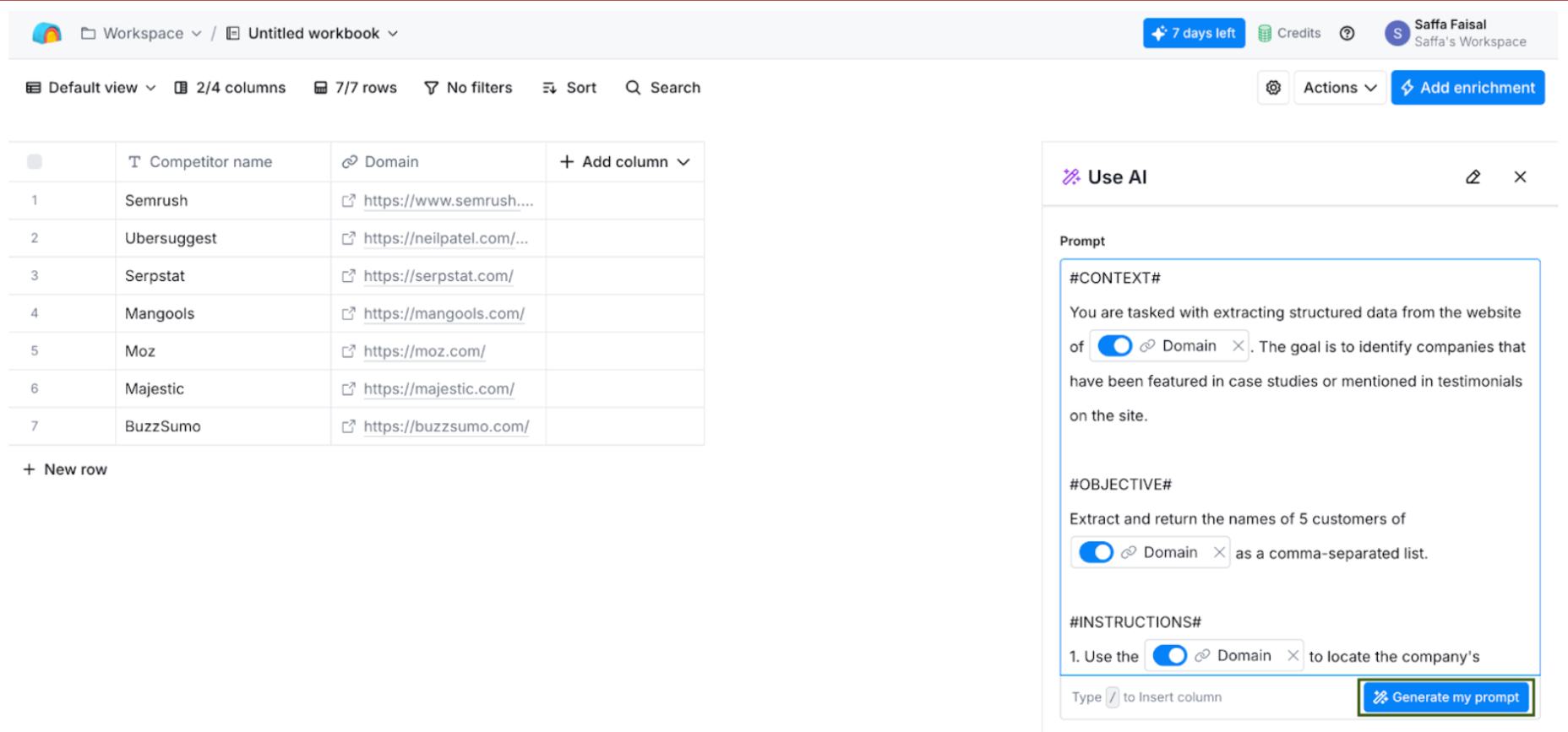
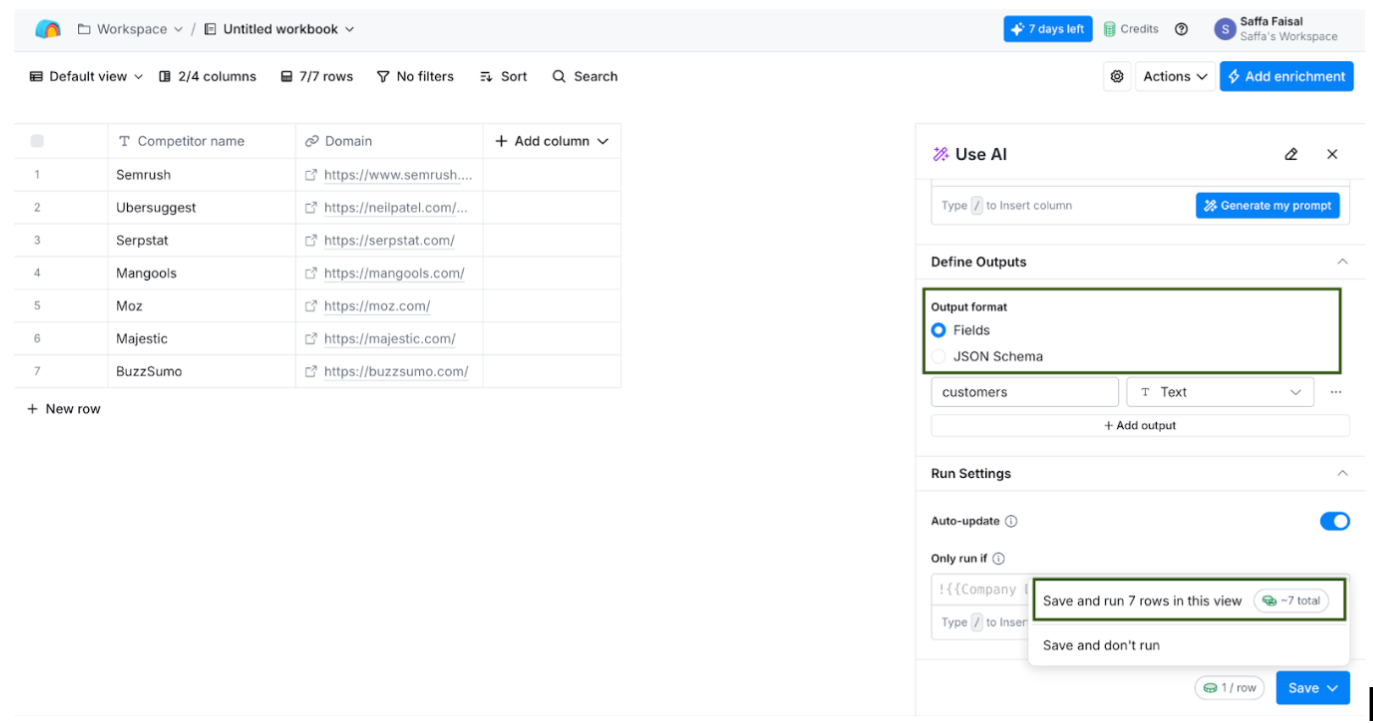
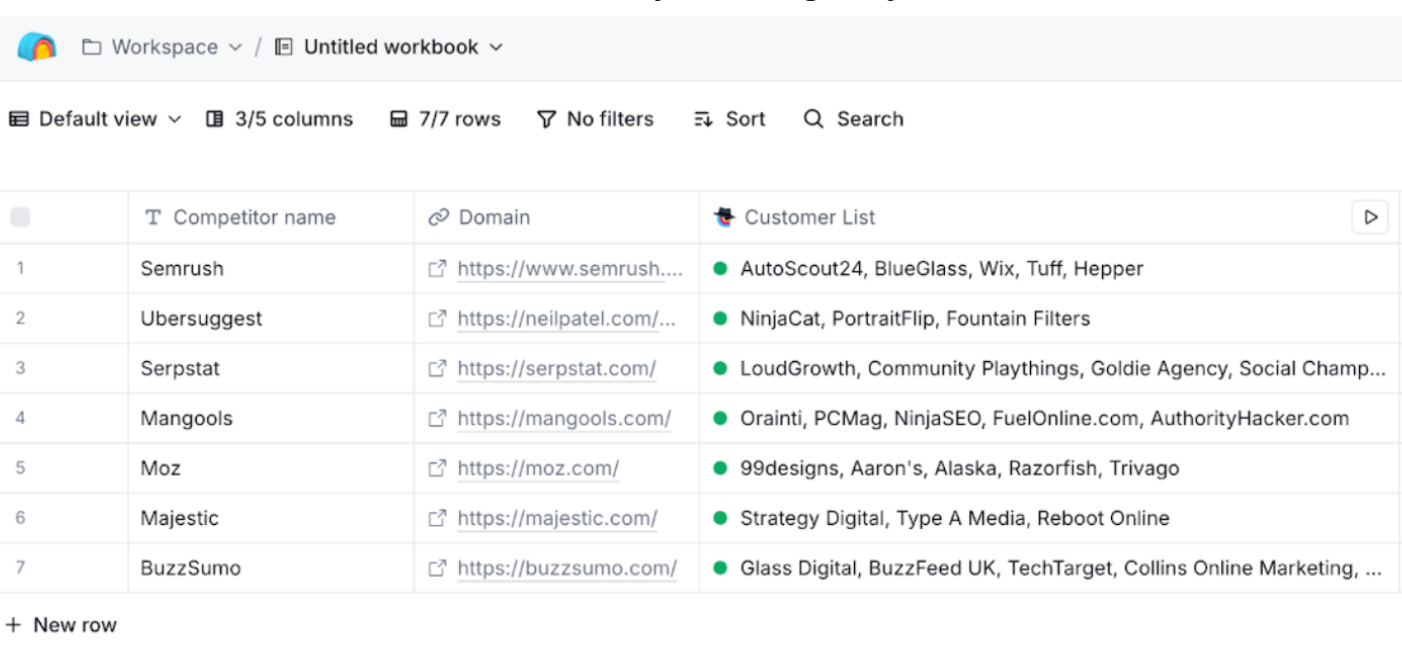
Account research is the bedrock of effective ABM prospecting strategy. If you’re not willing to dig deep on each account, including their strategic goals, trigger events, tech stack, key decision makers, and even their tone of communication, then ABM might not be for you.
I love how one expert on Reddit explains this: “ABM is more of a ‘Sherlock Holmes meets scalable strategy’ kind of thing. Close observation is what makes ABM a different strategy.”
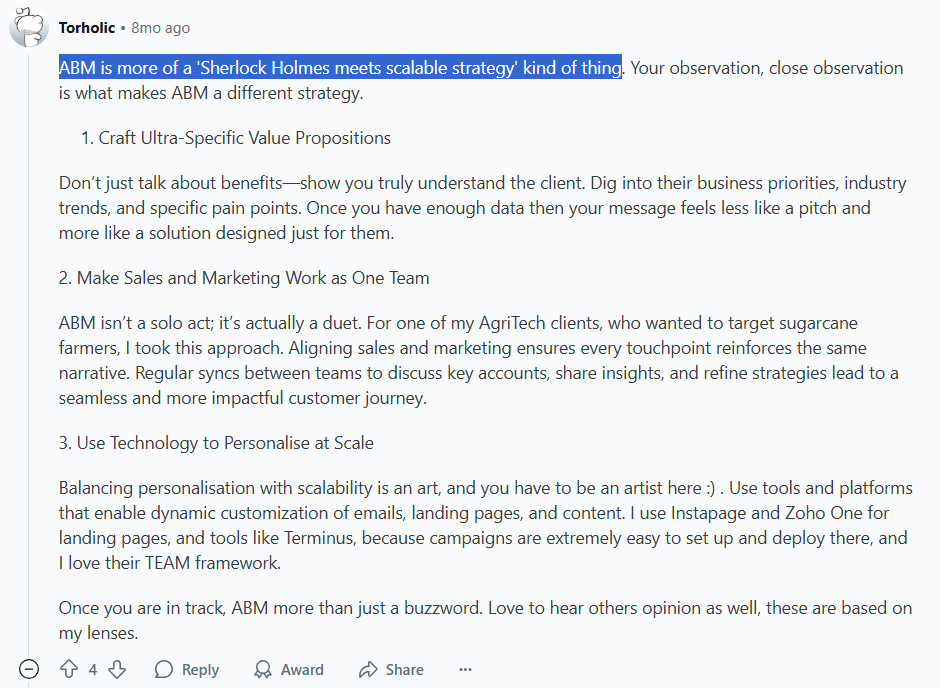
At least research the following parameters for each target account/ABM prospect (at least your Tier 1s and 2s):
One Reddit user shared that their ABM team does “a mix of deep dives looking at industry trends, company pain points, and even their tone of voice, and then we weave that into everything from emails to landing pages. It’s a lot of work, but when it clicks, it’s worth it.”
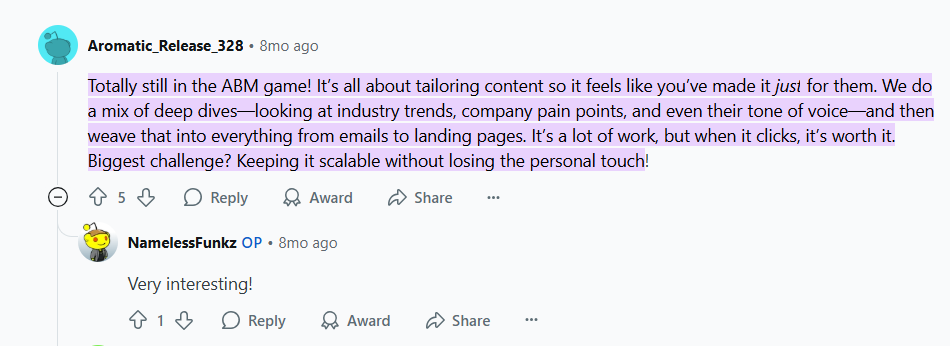
And I’d say, this is spot on.
Yes, you can’t spend 5 hours on every single account in Tier 3. But for your highest tiers, this level of research differentiates your outreach from the generic spam your prospects ignore daily.
Pro Tip + Free Resource: You should make a dedicated account dossier with all the research for that account in one place, after you have gathered all the information about using Clay’s enrichment features. You can download my free Notion template for that.
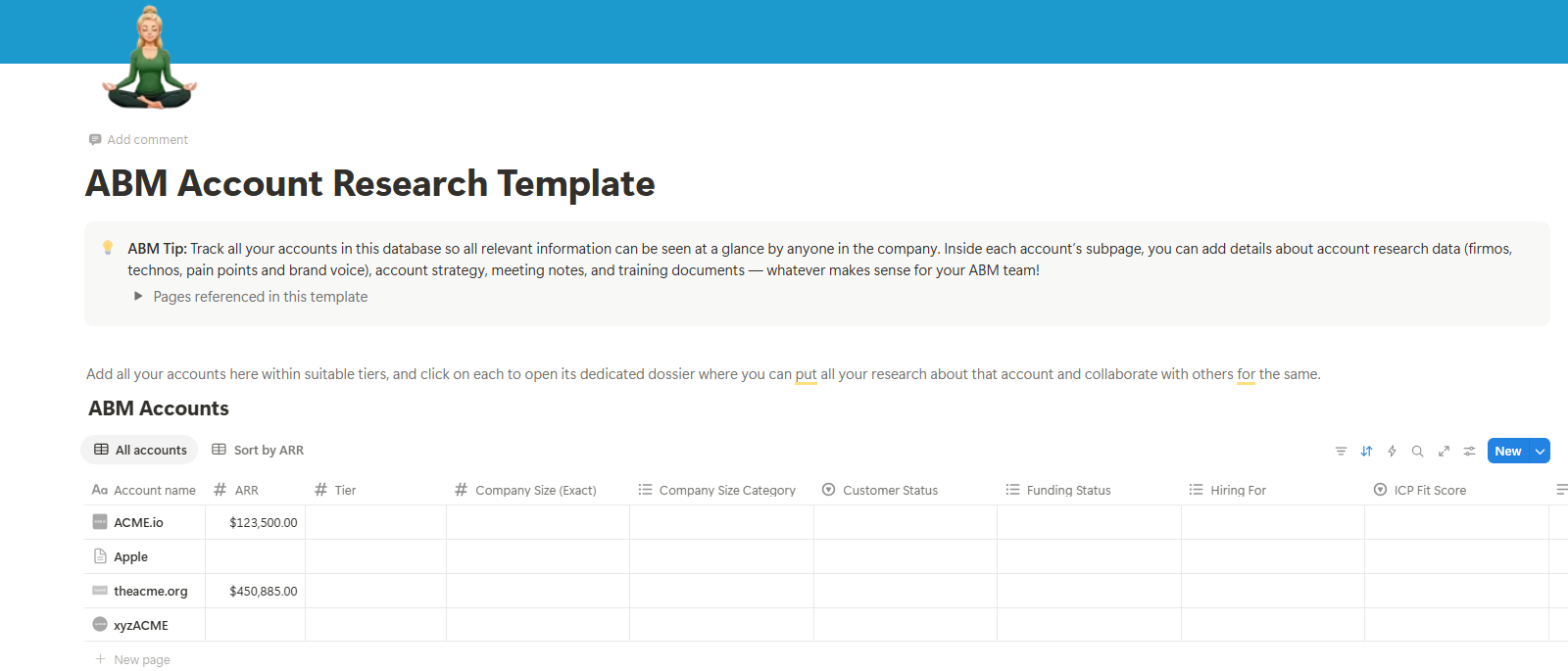
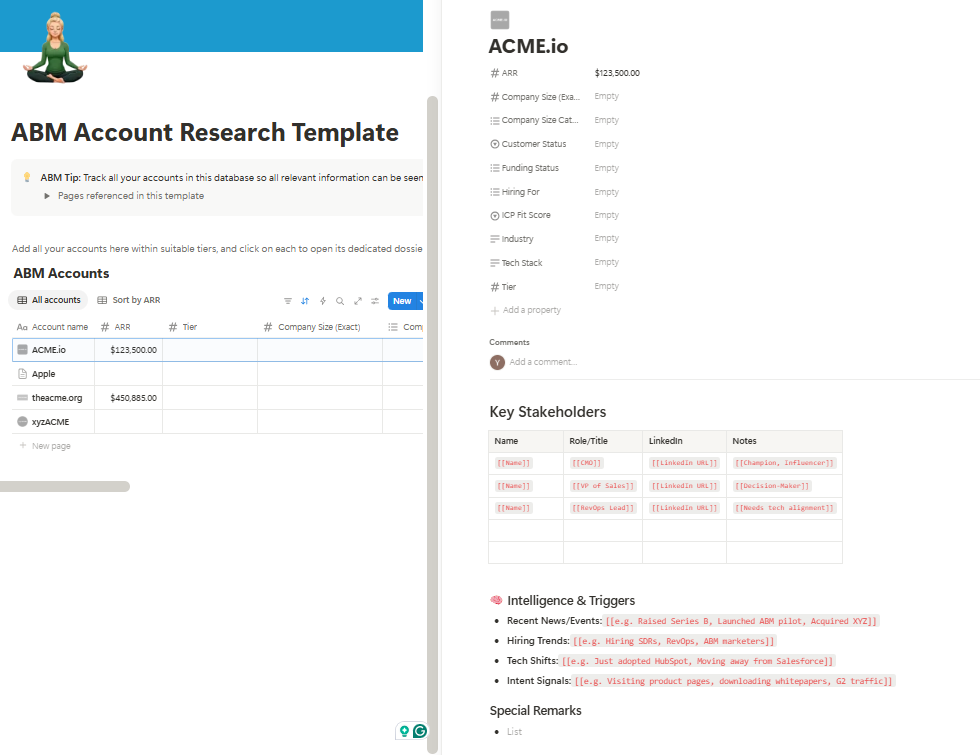
You’ve done the Sherlock Holmes research.
Now use it.
Personalization is, in fact, non-negotiable in ABM prospecting strategy.
But let me clarify: personalization is not just <em>{FirstName}</em> tokens in emails. It’s about showing the prospect that every message, every ad, every touchpoint was made just for them.
For instance, Adobe has been showing me hyper-personalized ads with my name on LinkedIn, which is something scarce:
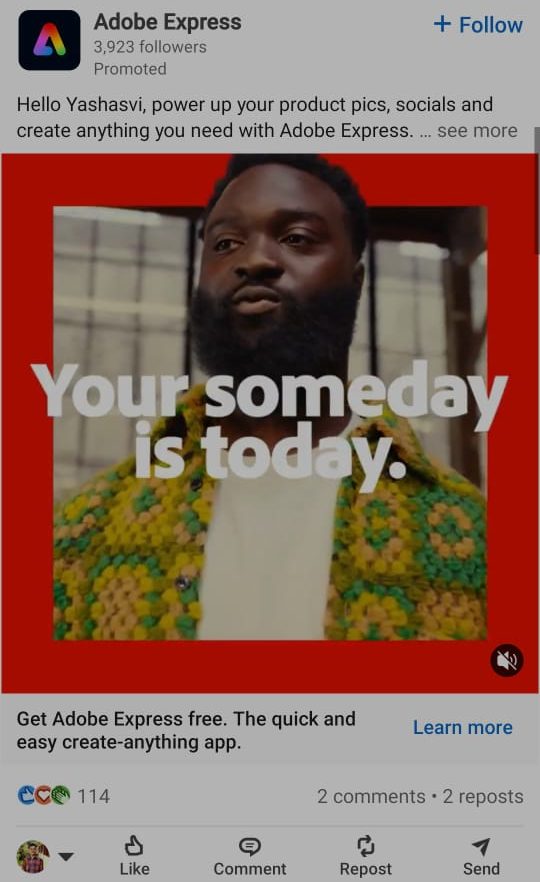 And the result?
And the result?
A big Zero – I mean, I have literally clicked a snapshot of this ad, I’m talking about it here, and I’m still getting these ads. Yet, I haven’t clicked on any of Adobe’s ads yet.
Reason?
They are taking my name, but I want to hear the answer to my problem. The ads are talking about social posts, but I would have appreciated something along the lines of “SEO blog featured image maker” because I’m a long-form blog writer.
Similarly, when an executive at your target account reads your email or sees your LinkedIn ad, they should think, “Wow, these folks really get my business.” If they don’t feel that, you’re not personalizing enough.
It’s B2B. People won’t get flattered with gimmicks here.
Some more tips:

In practice, that could mean referencing a recent event (e.g. “After your merger with X, we figured streamlining Y might be a priority. Here’s a 3-step plan to help.”). This level of specificity is impossible to mass-produce, which is exactly why it works.
If your ABM prospecting strategy consists of a few sales emails and a cold call, let me politely say: you’re doing it wrong.
In ABM, you need a multi-channel outreach strategy that surrounds the buyer from all sides.
That means coordinated touches via email, LinkedIn, phone, content, ads, events, even direct mail.
Components of a multi-channel ABM cadence:
Highly targeted email campaigns to multiple stakeholders at the account. These aren’t your generic sequencer templates. They’re the personalized messages we discussed, spaced out over several weeks. Each email should provide value (insights, resources) and build on the last.
Pro Tip: Share something your target hasn’t seen before (e.g. a custom audit you did of their website or a data point specifically about their company).
Engage both organically and via paid ads.
Have your team follow the company and key executives on LinkedIn like and comment thoughtfully on their posts (don’t be creepy, be relevant).
This warms them up (“oh, I recognize that person who’s been interacting on my posts”).
Meanwhile, run LinkedIn Ads targeting that company’s employees.
A clever approach is using LinkedIn Conversation Ads or Sponsored Messages coming from a leader in your company, addressing the account by name.
Also, share targeted content on your own company page and have employees amplify it to ensure your brand is constantly in their peripheral vision on social.
And as for monitoring the performance of each Linkedn ad and seeing which company is interacting with exactly which ad, you can use ZenABM.
ZenABM pulls company-level impressions, engagements, clicks, and ad spend for each specific ad campaign from LinkedIn’s official ads API:
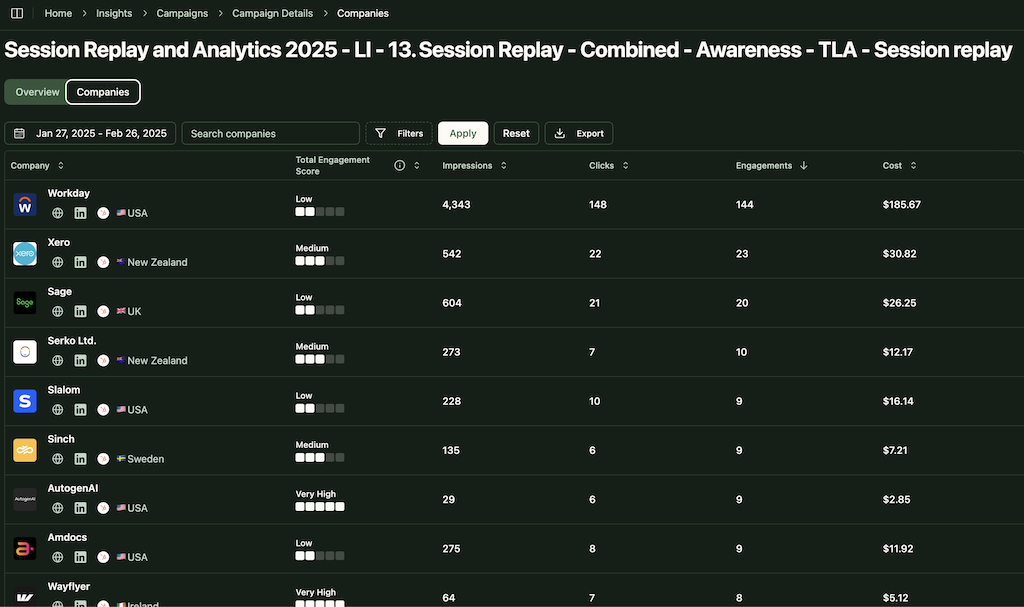
Yes, picking up the phone is still part of ABM. But it’s targeted. Maybe your CEO calls their CEO for Tier 1 accounts, or an SDR calls a lower-level champion to gather intel.
Reference the emails or content you sent: “Hi, following up on that industry benchmark report I emailed. Wanted to discuss a couple insights we found about [Target Company].”
Every call should feel like a continuation of a broader conversation, not a random telemarketing attempt.
Old school, but when everyone zigs (digital), you zag (tangible). Sending something physical can break through the noise. It could be swag or a gift aligned to their interests (found via your research). Or something creative like a custom comic strip about their situation, a mini piece of relevant equipment, etc.
Example: Engagio used personalized bobbleheads to stand out to their target clients and it worked. This is a perfect example to illustrate how creative your gifts can be.

If possible, invite target accounts to exclusive events like webinars with a personalized topic, executive roundtables, dinners at conferences, VIP demo days, etc.
People are more likely to respond to “Join a private roundtable of 5 CIOs in your industry to discuss 2025 trends” than to yet another product demo invite.
ABM is about building relationships, not just transactions. An in-person meeting or networking event can accelerate trust faster than 100 emails.
Many ABM teams host micro-events targeting a single account or a small cluster of similar accounts. Yes, it’s effort, but one closed deal covers the budget tenfold.
As part of your surround-sound, leverage retargeting on other platforms. For instance, if someone from a target account visited your site or engaged with an email, make sure they start seeing your ads on Google Display or Twitter. Keep your company top-of-mind everywhere they go online (just don’t stalk them to the point of weirdness. Frequency capping is your friend for that).
The secret sauce?
Coordination. These touches must work together, not as silos. The messaging across channels should be consistent and complementary.
Pro Tip: Time your touches strategically. Stagger the outreach to create a narrative. Example sequence for a Tier 1 account:
Each step references the last, creating a cohesive journey that feels personalized end-to-end.
So, by the time your sales rep finally gets that meeting, the groundwork is laid.
Intent data in ABM simply means that your ABM prospects are searching for products/services similar to yours.
For instance, if you sell a product management tool, you need to track accounts searching for keywords like “User onboarding”, “Tool bug fixing”, etc.
You can get this keyword-based intent data from tools like Bombora, 6sense, RollWorks, and the like who accumulate this data from thousands of third-party sources and proprietary technologies.
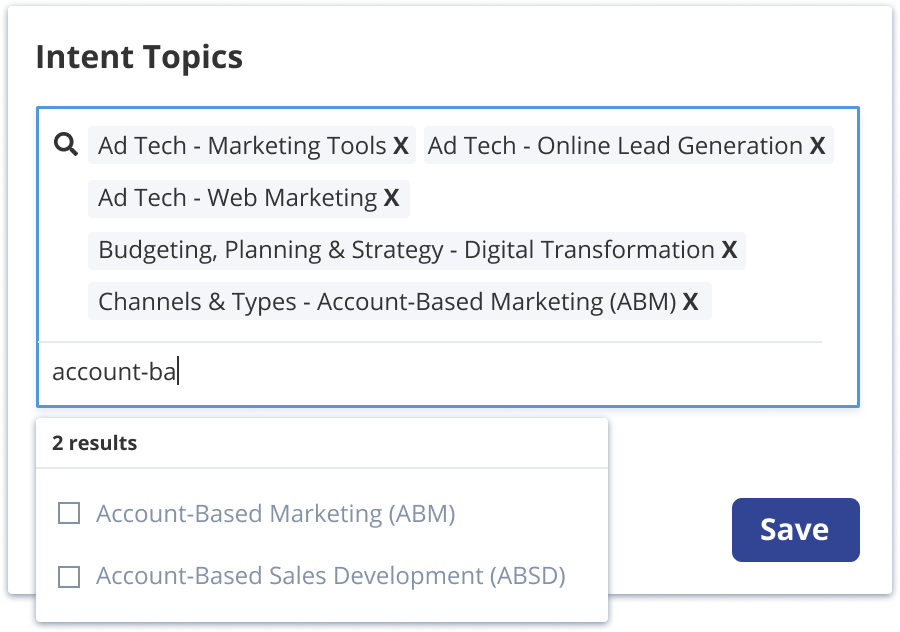
These are esentially called third-party intent signals.
There’s first-party intent signals too: Signals you gather from your own properties – e.g. target account visits your website, consumes specific content (webinars, case studies), or engages with your LinkedIn ads. This is gold because it’s direct interaction with you. For instance, if multiple folks from a target account have visited your “Pricing” page or viewed your LinkedIn ad about a problem you solve, that’s a hot signal.
How to use intent signals tactically:


Pro Tip: I just discussed using tools like 6sense, RollWorks, Bombora, etc. for finding accounts’ intents (that is, what exact solution they are searching for). But in place of spending on tools to know their intent, you can also embed the intent into your ads. For instance, at Userpilot, they ran their pilot ABM campaign with intent-embedded ads. They showed a mix of different ads showing different features like user onboarding, session analytics, and all-in-one. Then, using ZenABM’s campaign-level company engagement breakdown, they were able to figure out the intent of each account. In fact, it’s readily available in ZenABM:

Then, the accounts showing specific accounts were shown more BOFU ads related to their intent instead of trying to blabber out all features of the tool in a single ad.
Also, using ZenABM, the intent of each ABM prospect was pushed into CRM automatically as company property:
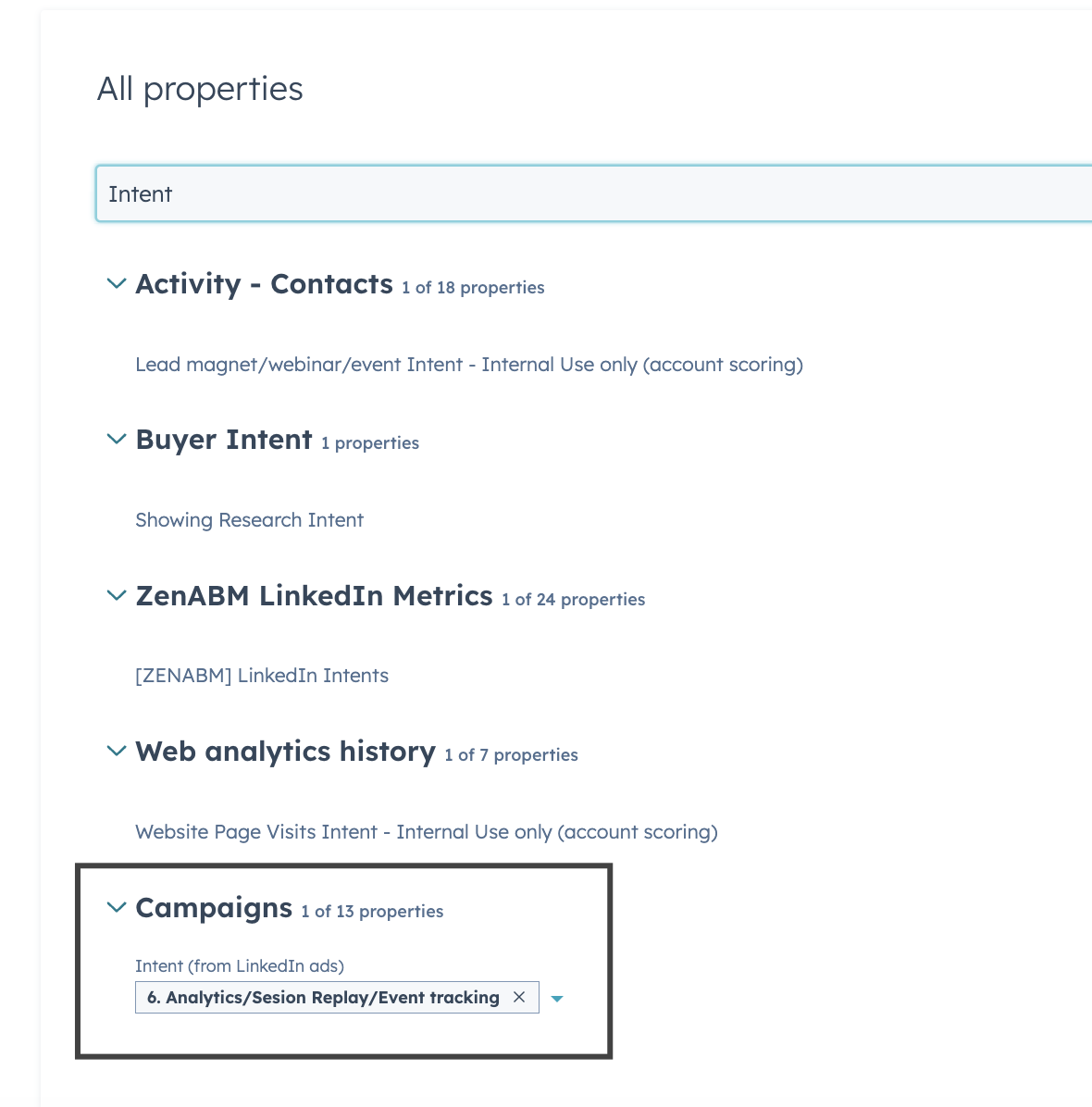
Btw, here’s what Userpilot’s intent-embedded LinkedIn ads ABM campaign looked like:
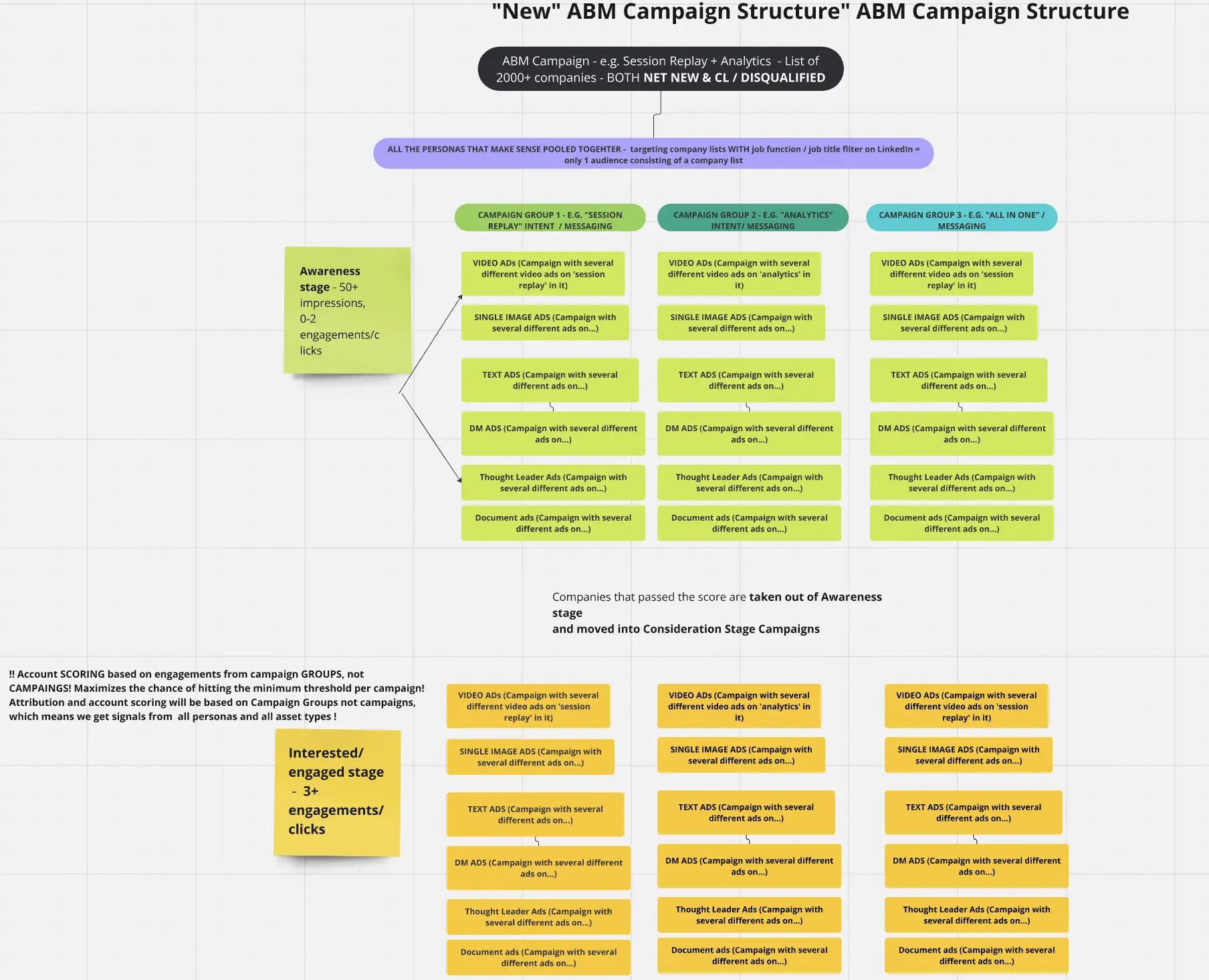
Here’s a list of tools and automations you can set up to support your ABM prospecting efforts:
| Category | Key Tools | Use Case | Examples / Notes |
|---|---|---|---|
| ABM Orchestration Platforms | 6sense, Demandbase, Terminus, Triblio | Identify target accounts, run coordinated multi-channel campaigns, personalize ads and content | Terminus enables web content personalization for ABM. Reddit users praise these for scalable, dynamic customization of emails, LPs, and content. Built-in intent data & account scoring included. |
| Analytics & Attribution Tools | ZenABM | Account-level engagement tracking, revenue influence, pipeline visibility | ZenABM connects LinkedIn Ads with your CRM to deanonymize LinkedIn ad viewers at the company level for each campaign. It also shows ABM stage progression, account scoring, and pipeline influence and helps BDRs see account engagement (e.g., 15 touches → “Aware” stage) and account’s intent (e.g., account X is showing good engagement for ads showing feature Y). |
| CRM & Sales Engagement | Salesforce, HubSpot, Outreach, Salesloft | Track account status, build cadences, and automate engagement workflows | Ensure CRM supports ABM views, fields, and timelines. ZenABM can push signals into CRMs like HubSpot to trigger BDR tasks. |
| Personalization Tools | Hyperise, NiftyImages, Vidyard, Loom | Personalized images, videos, greetings, and assets at scale | Insert logos/names into visuals for ads/emails. Use video tools for 1:1 outreach (“Hey Acme team…”). Enable account-specific experiences in webinars. |
| Collaboration & Project Management | Asana, Trello, Notion, Google Sheets | Coordinate ABM campaigns across teams, track progress and task status | Use Slack channels or stand-ups for team sync. Even a shared sheet can align ABM efforts. Tech can automate reporting and updates. |
If you’re planning to kick off your ABM prospecting strategy, here’s why you should add ZenABM to your tool stack:
ZenABM extracts campaign-level metrics (such as impressions, clicks, and interactions) for each account using LinkedIn’s official API:


Beyond tracking individual campaign performance, ZenABM aggregates engagement history to assign a lead score—reflecting overall brand awareness and campaign involvement.

Based on this data, ZenABM categorizes each account into customizable ABM stages.
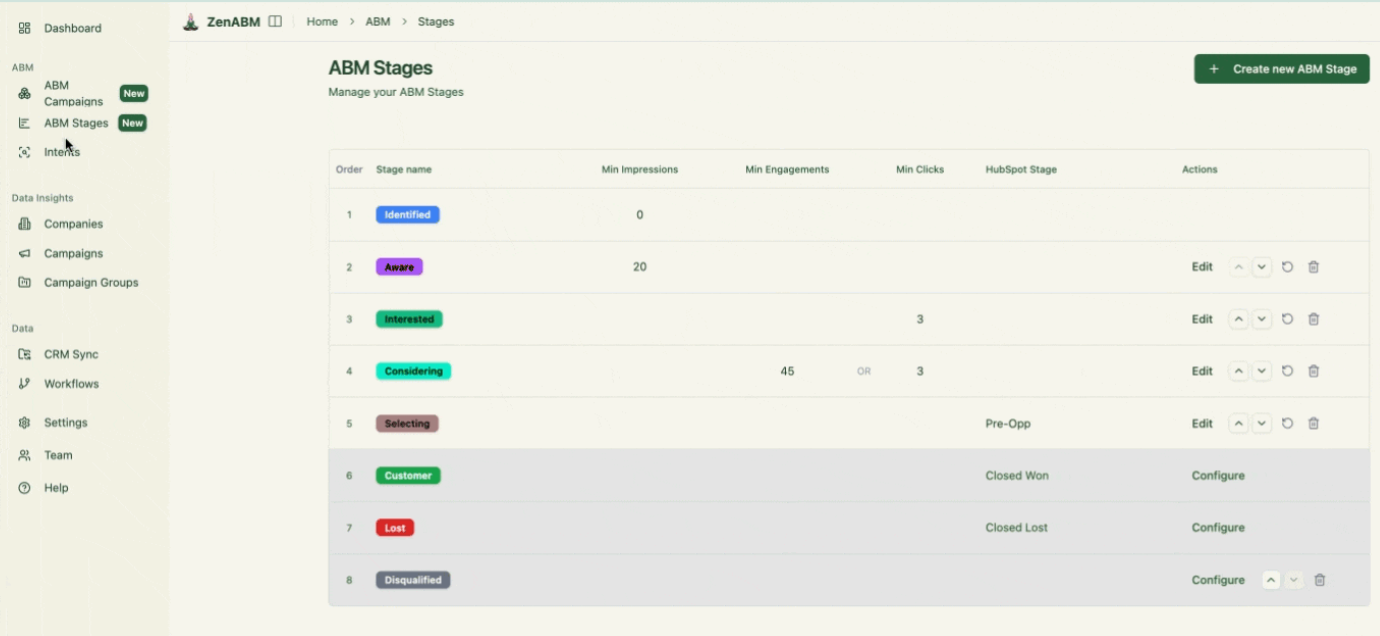
Using the tracked ABM stages, ZenABM automatically delegates warm accounts (those showing interest) to BDRs in your CRM.

This ensures BDRs can engage with high-priority leads promptly, without manual checks or Slack alerts.
While running ABM campaigns on LinkedIn, ZenABM ensures marketers operate within their tools while sales teams stay in the CRM.
ZenABM automatically transfers LinkedIn engagement data as CRM properties.
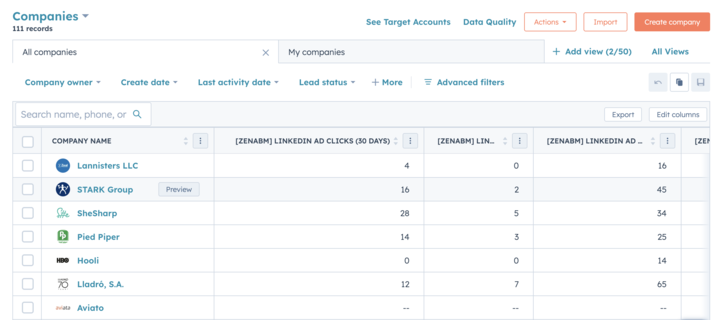
In the other direction, ZenABM maps accounts to CRM deals and fetches their associated revenue.
ZenABM delivers instant ABM analytics and ROI tracking based on campaign and revenue data.



Rather than paying for third-party data from Bombora, Demandbase, or RollWorks, embed buyer intent within your ad messaging itself.
For example, if you’re a SaaS for product teams, create campaigns around specific features like onboarding, analytics, and more.

Tag these campaigns within ZenABM and automatically identify the topics each company is interested in.

It even clusters accounts by common interest themes for better segmentation:
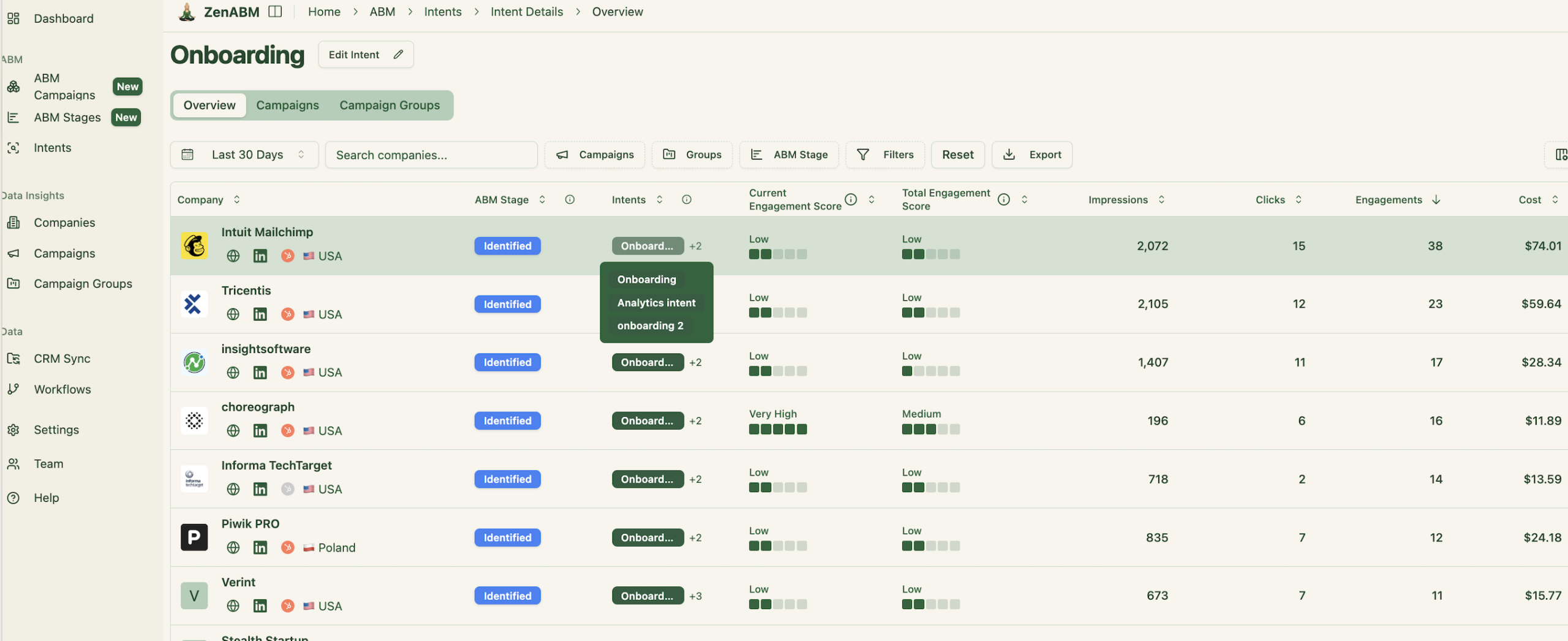
And of course, this intent signal is pushed into your CRM for sales to act on:

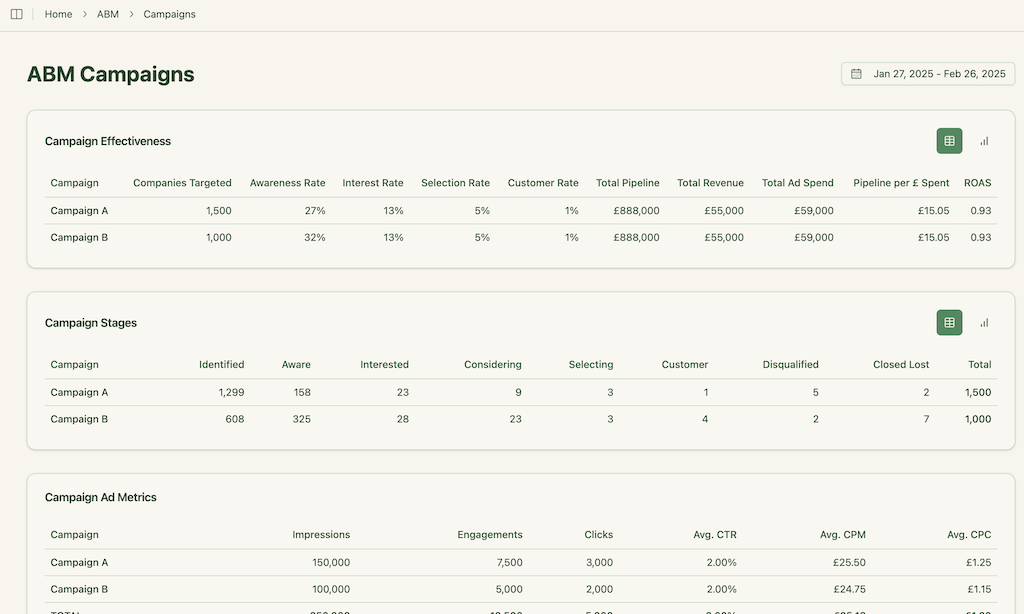
ZenABM highlights where prospects drop off in your funnel, helping you diagnose and fix conversion barriers between stages.
Example: If many companies stall at the ‘interested’ stage, it’s a signal to rework your nurturing strategy.
ABM prospecting strategy isn’t about volume. It’s about precision. From mapping your ideal accounts to creating Sherlock-level insights and deploying hyper-personalized, multi-touch campaigns, every step should feel intentional and coordinated.
Whether you’re just starting or scaling your ABM efforts, the right stack matters. ZenABM is built to give your sales and marketing teams full visibility and control over LinkedIn ABM performance automatically.
Want to run smarter, intent-driven ABM campaigns on LinkedIn?